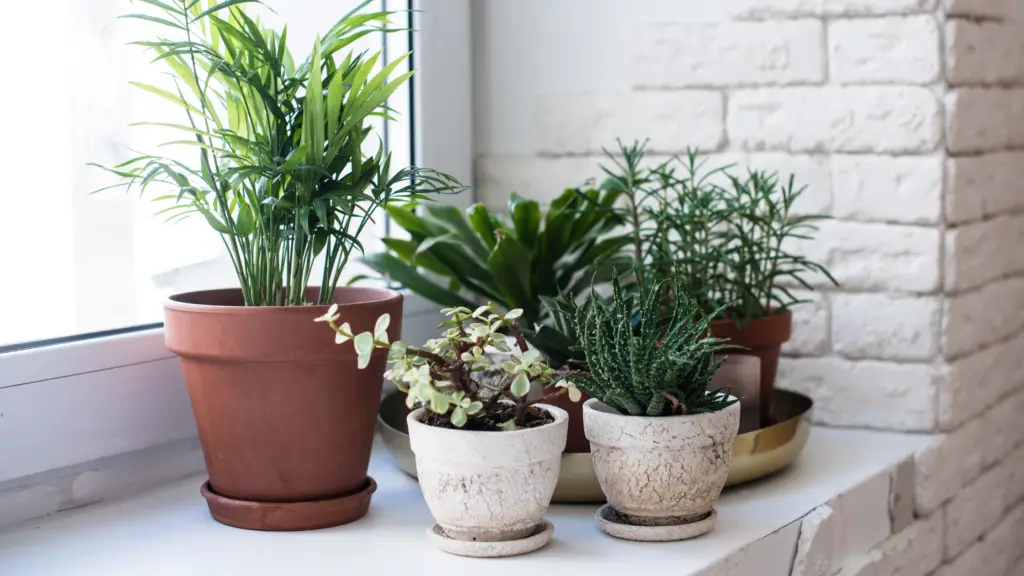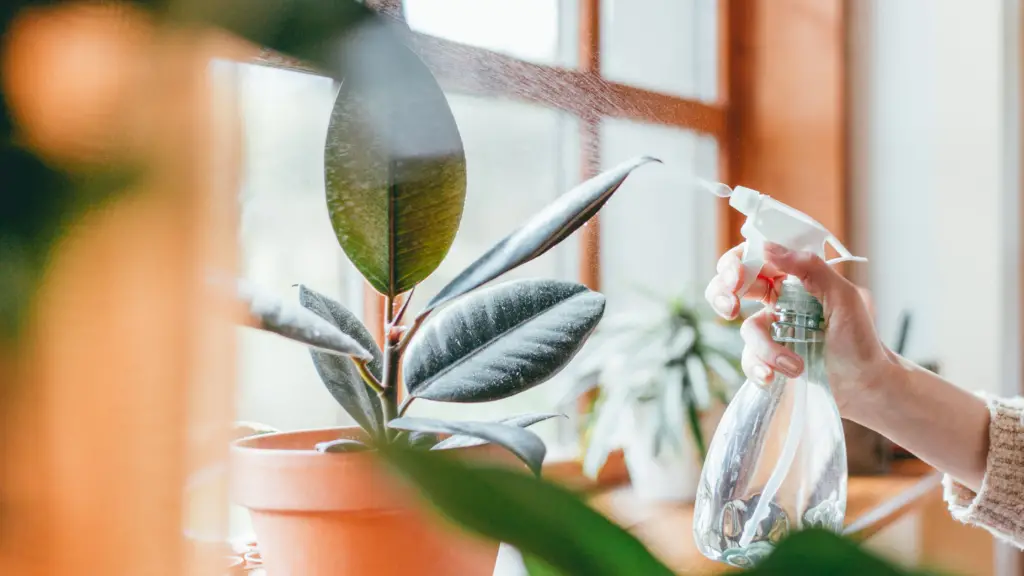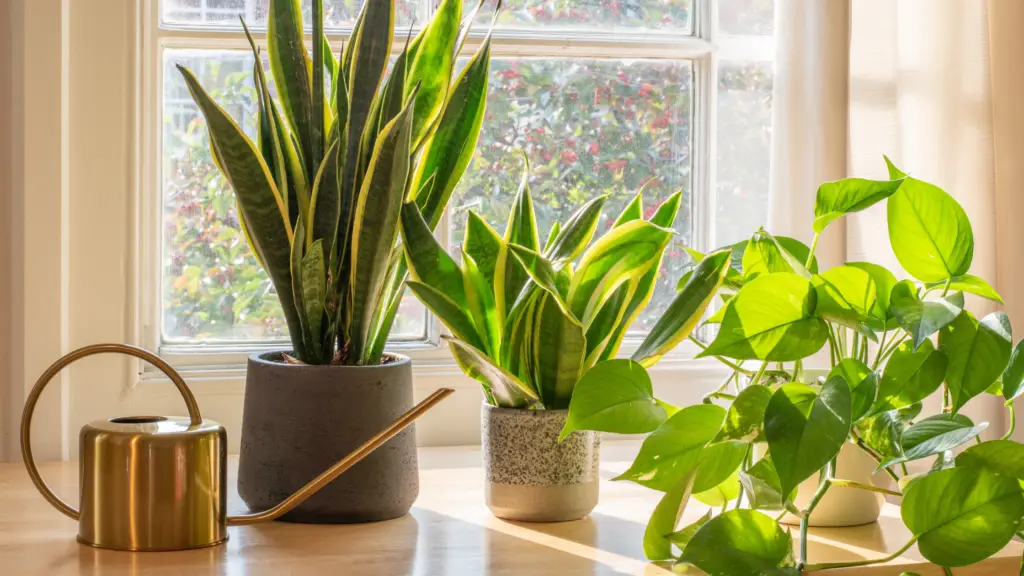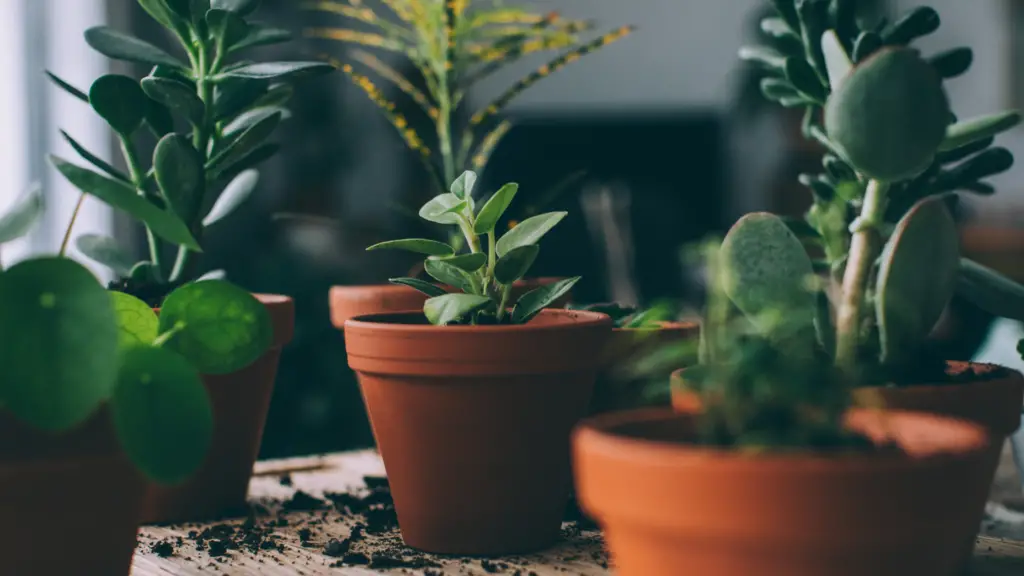Houseplants are a great way to add some greenery to your home, and keeping them can be a fun and rewarding hobby.
Let’s go over some tips and tricks for keeping your houseplants healthy and happy and foster your green thumb!
Choosing Your Houseplant
The first step in keeping houseplants is to choose the right plants for your home.
Not all plants are created equal when it comes to their light and temperature requirements, so it’s important to select ones that will do well in the conditions you can provide.
For example, if you have a room with a lot of natural light, you might choose plants like cacti or succulents, which thrive in bright, sunny environments.
On the other hand, if your home is on the darker side, you might opt for plants like snake plants or pothos, which can tolerate lower light levels.

Best Houseplants for Beginners
Getting started with houseplants as a hobby can be an intimidating task. Check out a few of our recommended houseplants for beginner’s as they are a bit easier to take care of and maintain!
Some good houseplants for beginners include:
- Spider Plant (Chlorophytum comosum): A hanging plant with long, thin leaves that are often variegated with white or yellow. It is easy to care for and can tolerate low light conditions.
- Snake Plant (Sansevieria trifasciata): A tall, upright plant with long, thin leaves that are often variegated with yellow or white. It is very tolerant of neglect and can survive in low light conditions.
- Pothos (Epipremnum aureum): A trailing vine with heart-shaped leaves that can be variegated with yellow, white, or pale green. It is easy to care for and can tolerate low light conditions.
- Money Plant (Pilea peperomioides): A small, round plant with coin-shaped leaves. It is easy to care for and can tolerate low light conditions.
- ZZ Plant (Zamioculcas zamiifolia): A slow-growing plant with glossy, dark green leaves. It is very tolerant of neglect and can survive in low light conditions.
- Peace Lily (Spathiphyllum sp.): A plant with large, glossy leaves and white flowers. It prefers moderate to bright, indirect light and should be kept in well-drained soil.
- Rubber Plant (Ficus elastica): A large, leafy plant that can grow quite tall. It prefers bright, indirect light and should be kept in well-drained soil.
These plants are generally easy to care for and can tolerate a wide range of conditions.
However, it’s important to note that all plants have different needs and preferences, so it’s important to research the specific needs of each plant before bringing it home.
Check out Easy Houseplants for Beginners from Plants.com for a huge list of resources and tips on buying your first houseplant!
Plant Size
Another important factor to consider when choosing houseplants is the size of the plant.
Some plants can grow quite large, while others stay small and compact.
Make sure to choose plants that will fit comfortably in the space you have available. Consider not only the height of the plant, but also its width and its overall shape.

Soil for Houseplants
Once you’ve selected your plants, it’s important to make sure they’re planted in the right type of potting soil.
Different plants have different soil requirements, so be sure to choose a soil that’s appropriate for the type of plant you’re growing.
In general, most houseplants prefer a well-draining soil that’s rich in organic matter.
Watering Houseplants
Watering your houseplants is one of the most important aspects of keeping them healthy.
Overwatering can lead to root rot, while under-watering can cause the plant to wilt and die.
The key is to find the right balance, and the best way to do this is to get to know your plants. Pay attention to the weight of the pot when you pick it up, as well as the color of the soil.
A dry pot will be light in weight and the soil will be a light color, while a well-watered pot will be heavy and the soil will be a dark color.
When in doubt, it’s better to underwater than overwater.
Check out this helpful plant care guide from Plants.com for a full resource on a huge list of plants for basic care and best practices.

Humidity
Another important aspect of watering your houseplants is to make sure they’re getting the right amount of humidity.
Most houseplants prefer a humidity level of around 50-60%, but this can vary depending on the type of plant.
To increase humidity around your plants, you can place a tray of water near them, or use a humidifier.
Fertilizing Your Houseplants
Fertilizing your houseplants is also an important part of keeping them healthy.
Most houseplants will benefit from regular fertilizing during the growing season, which is typically spring and summer.
You can use a balanced, water-soluble fertilizer, or one that’s specifically formulated for houseplants. J
ust be sure to follow the instructions on the package, as over-fertilizing can be just as bad as under-fertilizing.
Pest Control for Your Houseplants
Pest control is another important aspect of keeping your houseplants healthy.
Common pests include spider mites, thrips, and mealybugs. To prevent pests from taking over your plants, it’s important to keep an eye out for signs of infestation, such as webbing or small, discolored spots on the leaves.
If you do notice pests, try to remove them by hand before resorting to chemical pesticides.
You can also take preventative measures, such as regularly cleaning your plants with a damp cloth to remove dust and debris, which can attract pests.
Another preventative measure is to keep an eye out for any new plants you bring into your home, as pests can often hitch a ride on new plants.
Pruning Your Houseplants
Another important aspect of keeping your houseplants healthy is proper pruning and grooming.
Regularly removing dead or yellowing leaves can help keep your plants looking their best, and also helps to prevent pests and diseases from taking hold.
Additionally, regularly grooming your plants can help to shape them, which can give them a more attractive appearance.

Benefits of Keeping Houseplants as a Hobby
Along with being a fun hobby to add some greenery to your space, keeping houseplants as a hobby includes a long list of other great benefits!
Keeping houseplants as a hobby has many benefits, including:
- Improved Air Quality: Many houseplants act as natural air purifiers by removing toxins such as formaldehyde, benzene, and trichloroethylene from the air.
- Increased Humidity: Houseplants can help increase humidity in your home, which can be beneficial for respiratory health.
- Stress Relief: Studies have shown that spending time around plants can reduce stress and improve mood.
- Aesthetic Appeal: Houseplants can add color, texture and life to a space, making it more inviting and enjoyable.
- Sense of Accomplishment: Caring for a living thing and watching it grow can be rewarding and satisfying, giving a sense of accomplishment.
- Better Sleep: Plants can improve the air quality and overall atmosphere of a bedroom, which can help promote a better sleep environment.
- Connection to Nature: Houseplants can provide a connection to nature, even if you live in an urban area or have limited outdoor space.

Where can I buy houseplants?
There are several places where you can buy houseplants, including:
- Local nursery or garden center: These are great places to buy plants because you can see the plants in person and select the ones that you like best.
- Plant shops: Some cities have specialized plant shops that sell a wide variety of houseplants.
- Home improvement stores: Many home improvement stores carry a selection of houseplants, and it’s a convenient option for those who want to buy other home stuff and plants at the same time. Check out Home Depot, Lowes or even Costco!
- Online retailers: There are several online retailers that sell houseplants, including large online marketplaces, independent plant shops, and seed and bulb catalogs.
- Local farmer markets: Sometimes, you can find houseplants at local farmer markets or flea markets, it can be a good opportunity to support local sellers.
- Online Retailers: There are many online resources available to order houseplants directly to your front door. We recommend Plants.com for direct to home plant delivery service and a wide variety of houseplants to choose from.
It is important to check the condition of the plants and their suitability for the conditions in your home before buying. And if you are buying from a local nursery or garden center, it’s always a good idea to ask the staff for advice on plant care.

Conclusion
It’s important to remember that houseplants are living organisms and they require attention and care.
This means that you should be prepared to put in some time and effort to keep your plants healthy and happy.
You might need to adjust the placement of your plants, or give them more or less water, as the environment changes.
In conclusion, keeping houseplants can be a fun and rewarding hobby, but it does require some knowledge, care and attention.
By choosing the right plants for your home, providing them with the right type of soil, water and light, and keeping an eye out for pests, you can ensure that your houseplants will thrive and bring beauty to your home.
With a little patience and care, you can enjoy the many benefits of houseplants and be a successful houseplant hobbyist.
Be sure to check out Plants.com for the best houseplants delivered right to your front door. Start your houseplant hobby today!

